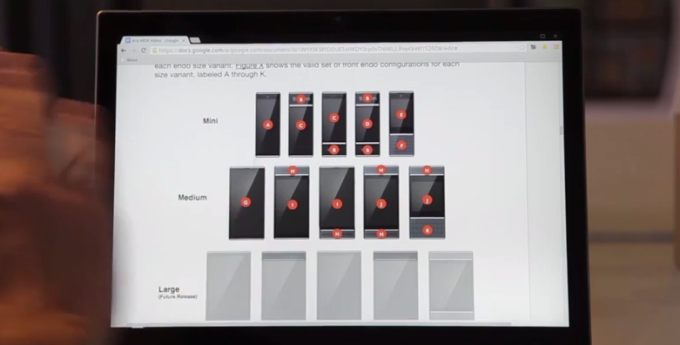A new mobile messaging application called FireChat is empowering nearby smartphone users to stay in touch even when there's no cellular service or Internet connection.
In just two weeks since its release on the
iPhone,
FireChat already has provided a flicker of hope for people pining for more effective, secure and affordable ways to communicate. That's because the free messaging app harnesses a technology called wireless mesh networking, which might someday allow a myriad of devices to connect like links in a chain.
The technique might someday be used to tie together thousands of devices with built-in radios and make it possible to be online without having to pay for the access. It could also enable online communications in remote areas or disaster zones without
Wi-Fi or cellular signals. Furthermore, the conversations in these so-called "off-the-grid" networks can't be easily hacked into by spies and mischief makers or shut down by governments trying to stifle free speech.
"We trying to create networks built by the people for the people," said Micha Benoliel, CEO of Open Garden, maker of the
FireChat app.
Open Garden, a San Francisco startup with just 10 employees, is taking another step toward its ambitious goal with Thursday's release of a
FireChat app for Android phones.
FireChat could be an even hotter commodity on
Android given the demographic differences between that platform's user base and the typical iPhone owner. The app already has been installed on more than 1 million
iOS devices.
Many smartphones running on Google Inc.'s free
Android software are cheaper than Apple Inc.'s
iPhone. That has made
Android phones the top-selling mobile devices in less affluent countries, including in regions where Internet access is inadequate or expensive.
Google is among the big Internet companies intrigued with mesh networking's potential to bring more of the world online.
Sundar Pichai, Google's executive in charge of
Android, has touted mesh networks as a way to connect wearable computers, such as the company's Glass eyewear. Mesh networks also could be used to bring a wide variety of everyday appliances online, helping to build an Internet of things instead of just websites.
FireChat's reach so far is limited. When connecting off the grid,
iPhone app users have only been able to send text and photos to other
FireChat users within a range of 30 to 100 feet.
Later this year, Open Garden plans to upgrade
FireChat's iPhone app so off-the-grid users will be able to hopscotch through a daisy chain of devices to extend the reach of a local network. If this works, a
FireChat user sitting in the right-field bleachers of a baseball game would be able to text with a friend on the other side of the stadium if enough other
iPhone users in the ballpark also are on FireChat.
This extended range will be available immediately on
FireChat's Android app because Open Garden released a mesh networking app for that operating system nearly two years ago.
FireChat's iPhone app piggybacks on an often overlooked feature called the Multipeer Connectivity Framework that Apple Inc. included in its latest mobile operating system, iOS 7, released last September. Apple says more than 80 percent of people using its mobile devices rely on iOS 7.
For now,
Android phones and
iPhones with the
FireChat app won't be able to engage in off-the-grid conversation. Open Garden, though, believes it will eventually be able to make mesh networking work on phones running on different operating systems.
As the mesh networking software improved, Benoliel realized Open Garden needed to come up with application to demonstrate what the technology could do. In that practical sense,
FireChat is similar to the word processing and spreadsheet programs that Microsoft released decades ago to help broaden the appeal of its Windows operating system for personal
computers, said Christophe Daligault, Open Garden's marketing chief.
FireChat's development was driven by the popularity of other mobile messaging apps such as Snapchat and WhatsApp that enabled smartphone users to text and send pictures to their friends and family without having to pay smartphone carriers.
Like texts and photos sent on Snapchat, nothing transmitted through
FireChat is saved. All content evaporates once the app is closed.
FireChat also allows all its users to remain anonymous, another feature that is becoming popular on a variety of mobile messaging apps, such as Wickr and Rumr.
There still aren't enough people using
FireChat to ensure users will find someone nearby to message. To pique people's interest in the app,
FireChat offers an "everyone" option that allows users to enter a digital chat room with up to 80 other random users located in the same country. This option requires a Wi-Fi or cellular connection.
Dailigault concedes
FireChat's chat room isn't as high-minded as mesh networking.
"We are finding a lot of people are using it when they are just looking for something to do for a few minutes," Dailigault said. "Some of the discussions there are turning out to be more interesting than anything they can find on Facebook."






















